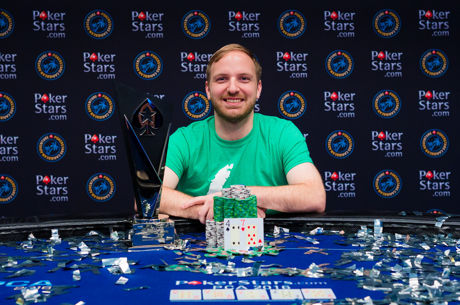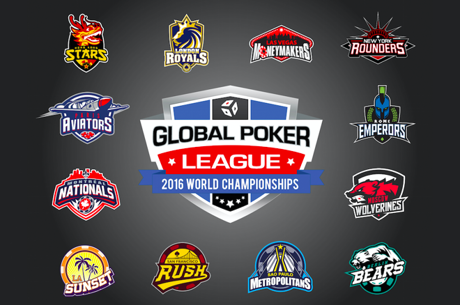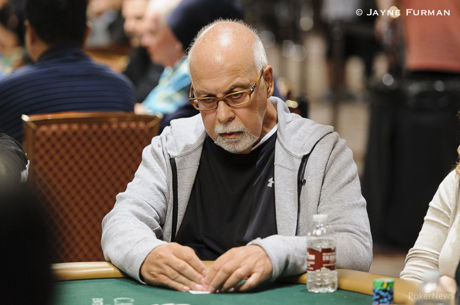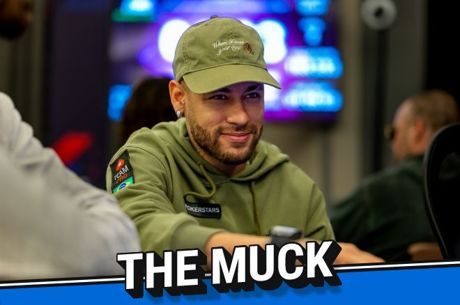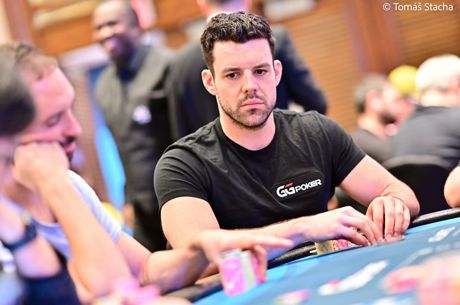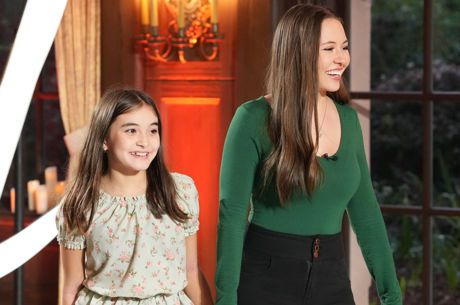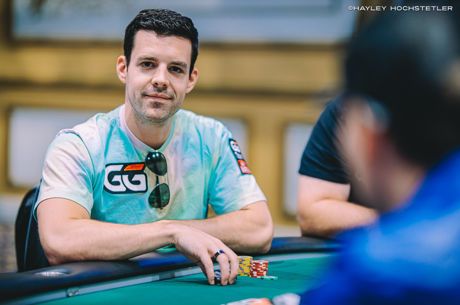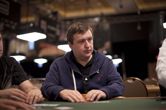Ten Years of High Stakes Poker: Celebrating the Iconic Cash-Game TV Show

Having been dealt pocket kings for the very last hand of the day's filming, Sammy Farha wasted little time in reraising Barry Greenstein to $12,500. An impassive Greenstein counterpunched by nonchalantly sticking another $50,000 into the pot. With an unlit cigarette dangling between his lips, the debonair Farha pondered his options before he announced that he was all in. Greenstein snap-called with aces, prompting commentator AJ Benza to excitably announce that the pot is "a mind-blowing $361,800 in cold, hard cash."
Fortunately for Farha, he flopped a king and his opponent didn't improve.
"You got to gamble to win, boys and girls," a smug Farha preached to the other players.
It was a huge hand and undoubtedly a standout moment of the inaugural season of the cash-game poker show High Stakes Poker. Little did GSN (Game Show Network) bosses know that simply pointing the camera at a game of cards would turn out to be a smash hit. With an eclectic mix of poker pros and deep-pocketed recreational players sat behind brick-like stacks of $100 bills, which created monstrous pots, High Stakes Poker enthralled audiences from the get go and provided a window into the rarely seen world of high-stakes cash games.
For poker fans — both pros and recreational players — this show was an unmissable hour of television every week from Jan. 16, 2006.
I've made hundreds of guesses in my life, but I was 100 percent sure this would work. — Mori Eskadani
How High Stakes Poker first burst to life was triggered by a chance encounter with poker legend Johnny Chan. Mori Eskandani, president of poker television production company Poker PROductions, and hole-card cam inventor Henry Orenstein were having dinner with a troop of GSN execs at Jasmine, Bellagio's gourmet Chinese restaurant.
Midway through their meal, Chan stopped by the table and recounted to Eskandani and Orenstein how he'd just suffered a crushing bad beat in a cash game, losing a pot worth over $700,000. The eye-watering sum and Chan's casual account of his misfortune immediately caught the attention of GSN's Kevin Belinkoff and Ian Valentine.
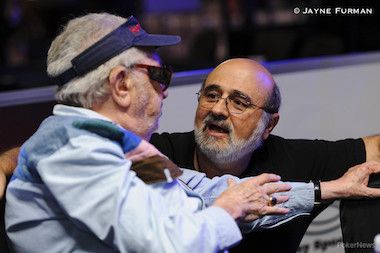
They later picked Eskandani's brain to discover whether a show dedicated to cash-game poker had legs. But rather than waxing lyrical about the merits of the idea, he ushered the pair over to Bobby’s Room at Bellagio — an exclusive salon privé and the habitat of the beasts atop the poker food chain. With their noses pressed up against the glass, Belinkoff and Valentine were enchanted by this clandestine world of high-stakes cash poker, referred to as "The Big Game."
"They stood there and watched people playing and laughing, and there were big pots," Eskandani recalled. "They could feel that there was something there as a show."
Eskandani, who has resided in Sin City since 1985 and was a regular at the cash game tables, was so sure a deep-staked cash game would be a ratings winner that he didn't even bother shooting a pilot episode.
"I've made hundreds of guesses in my life, but I was 100 percent sure this would work," he said.
He admitted that he wasn’t reinventing the wheel; it's just that poker shows up to then — the apex of the poker boom — had featured tournaments. With this format, there would be no triumphant victor showered in confetti and begrudgingly answering anodyne questions about plans for the winnings. This was a continuous, fluid game.
"I had to do some convincing to let the game be the story," Eskandani said. "This isn't a tournament with one eventual winner — it's a game with winners and losers."
Although GSN had produced Poker Royale, which first aired in 2004, the harsh reality was that the glitzy World Poker Tour and World Series of Poker dominated television poker back then. Poker Royale viewing figures were sliding and GSN bosses were poised to pull the plug on poker.
"Our poker shows had really stopped performing and if [High Stakes Poker] hadn't done well, GSN would have been done with poker programming," revealed Belinkoff, vice president of original programming and development at the time. High Stakes Poker was a last roll of the dice. Belinkoff said: "We would be doing something different, while at the same time tapping into the poker audience and, hopefully, broadening it with stories evolving at the table that would go beyond just the game."
As well as featuring well-known pros like Daniel Negreanu, Phil Hellmuth, Doyle Brunson and Chan, High Stakes Poker was open to well-heeled amateurs. These included the likes of gynecologist Dr Amir Nasseri, restauranteur Fred Chamanara, and the late Jerry Buss, the owner of the LA Lakers.
The main thing that attracted me is that I was a cash player and they were running a cash game show where I would get to play against tournament players. — Barry Greenstein
However, it was the fact that tournament players were invited that whetted Greenstein's appetite: "The main thing that attracted me is that I was a cash player and they were running a cash game show where I would get to play against tournament players. I knew it would be a good set up for me."
The minimum required to sit down at this table was $100,000, yet Negreanu bought in for a cool $1 million. As a token of appreciation, GSN paid each player an hourly 'wage' of $1,250. Calling the action was actor and comic Gabe Kaplan, though he was a veteran high-stakes poker player so his insight into the game and the players was invaluable. Columnist and television presenter Benza was cast as co-host and the straight man for Kaplan's witty observations.
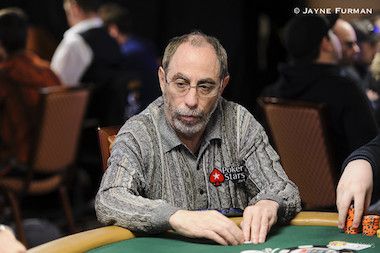
At the Golden Nugget in downtown Las Vegas, the casino's high-ceilinged ballroom was transformed into a swanky looking suite with plush furniture, a bar, and a bountiful supply of complementary food. The focal point of the set, of course, was the poker table, which seated eight players (plus the dealer) and housed concealed cameras to observe the players' hole cards through small panes of glass. Players wore microphones to capture all the table talk. And using real money besides casino chips, reinforced this wasn't a tournament and that every pot involved hard currency.
"Anything that could set it apart from what was already on television was key," Belinkoff explained. "So we used real chips and real cash. Players looked like real people, not NASCAR drivers with logos plastered all over them."
Nevertheless, this was still a learning experience for some at GSN. For instance, Belinkoff's suggestion for a bad beat jackpot involving a prize like a luxury car was shot down in flames as a gimmicky idea. And when, during a meeting with the players the night before cameras started rolling, Jennifer Harman asked if they could bring "sweaters," he responded: "Yes, when the lights aren't on it can get very cold."
Belinkoff's answer was met by quizzical looks: "The players laughed and then explained to me that she meant people who sit behind the players during the game."
Most casual poker fans would never have seen a cash game on television, let alone been familiar with straddles, running it twice, taking insurance or the 7-2 game (if a player won a hand with 7-2 he or she received $500 from every opponent). This all added a little spice to the sauce. Not that it needed it, though. Eskandani says some hands in that first season blew his mind, while one controversial moment caught everyone by surprise.
It came when Freddy Deeb flew into a profanity-strewn rage after he was accused, jokingly or not, by other players of 'going south' (taking his money off the table and pocketing it). Eskandani had to step onto the set to try to defuse the escalating situation.
"I thought a fight was going to break out," he remembered.
I was extremely nervous. Not about the play, but about the cameras. — Phil Galfond
The producers invited as many as 20 players for each season's dozen episodes, which were usually shot over the course of a few days. However, it was vital to have the right blend of characters to ensure entertaining table chatter and fireworks, and those with a fearless propensity to gamble and attempt outrageous bluffs had a good chance of securing a seat.
"The camaraderie was important, or if the players were action players," Eskandani explains. "Having a couple of players who liked to gamble means you’re not at the mercy of the cards and nobody's waiting for aces."
Loquacious 2006 WSOP Main Event champion Jamie Gold made his High Stakes Poker debut in the third season. Although some viewers took to the Internet to ridicule his play and table talk, he was involved in some of the most entertaining incidents. The protracted hand where he lost a $391,000 pot with kings versus Farha's aces was a highlight, especially with all the peculiar verbal jousting that preceded it.
"I think that hand lasted something like 14 minutes and we showed the whole thing without editing one second," said Eskandani. "It was so natural, but that is something that happens every day in cash games."
In Season 4, the minimum buy-in was jacked up to $500,000, which meant players' cash spilled across the felt in front of them and six-figure pots were commonplace. The largest ever pot on High Stakes Poker came in Season 5, in which poker prodigy Tom Dwan and veteran pro Greenstein collided in a pot worth $919,600. Dwan won with three queens.
"In the [WSOP] Main Event, the most anyone can lose is $10,000," said Belinkoff, "but here you'd see hundreds of thousands of dollars on the line. The stakes were enormous."
By now, many of the game's young guns who had cut their teeth in the world of online poker were appearing on the show; the likes of Dwan, Andrew Robl, Lex Veldhuis, Dario Minieri, and Phil Galfond.
"I was extremely nervous," Galfond recalled, "not about the play, but about the cameras and sitting with everyone I knew from TV, especially since they didn't know me."
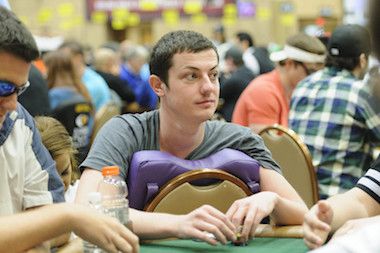
The fearless Dwan crushed the game in Season 6, so the producers hatched a plan to have him wield a sledgehammer to smash the four-foot tall High Stakes Poker ice sculpture that the Golden Nugget had carved for the show. This scene would bring the curtain down on the season as the credits rolled. While the crew was setting up the cameras and lights in a rundown alley behind the casino where the sculpture would be obliterated, unbeknownst to anyone on the show, Dwan had cashed out for $1 million and stuffed the money in his backpack.
Dwan then walked to the alley, dropped his backpack on the ground, donned safety glasses and began pounding the frozen water right on cue. It eventually shattered. Yet it was only after filming was finished and everyone had packed up and left that Dwan realized something was missing.
"He left a backpack with a million dollars of cash in a back alley of the Golden Nugget," said an incredulous Eskandani. "We dashed back and all the spotlights and everybody was gone, but the backpack was sitting right there. I said, 'Tom, you just won your money twice.'"
Season 7 in 2011 was High Stakes Poker's swansong. Only this time, many of the show's most popular participants didn't reappear and Kaplan was replaced by Norm Macdonald in the commentary booth. The previous season, Benza was dumped, which led to him penning a blog post, 'A flop, a turn, and river of shit,' in which he lambasted the decision.
In total, High Stakes Poker ran for 98 episodes and is widely considered by the game's cognoscenti to be the pinnacle of poker programming. Certain clips have had hundreds of thousands of views on YouTube, while most days you'll find old episodes playing on Twitch's poker channel.
It's one show that poker fans would love to see resurrected. Greenstein — one of just four players to appear in all seven seasons — said: "I think poker fans enjoyed it the most, and I still have many people ask me about it. High Stakes Poker was a reality show for extremely big money."
For Galfond, it was the pot sizes and personalities that appealed.
"It was the first show where you really got to see what the pros were like, both in casual conversation and in handling big swings and decisions," he said.
Indeed, High Stakes Poker was a trailblazer for other shows, but few could match its drama and massive pots.
Belinkoff concluded: "Other shows have tried a high-stakes cash game, but we were the first and there's something really special about what we captured."
Want to stay atop all the latest in the poker world? If so, make sure to get PokerNews updates on your social media outlets. Follow us on Twitter and find us on both Facebook and Google+!

